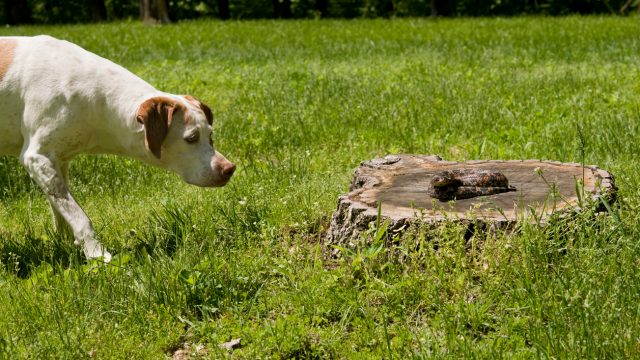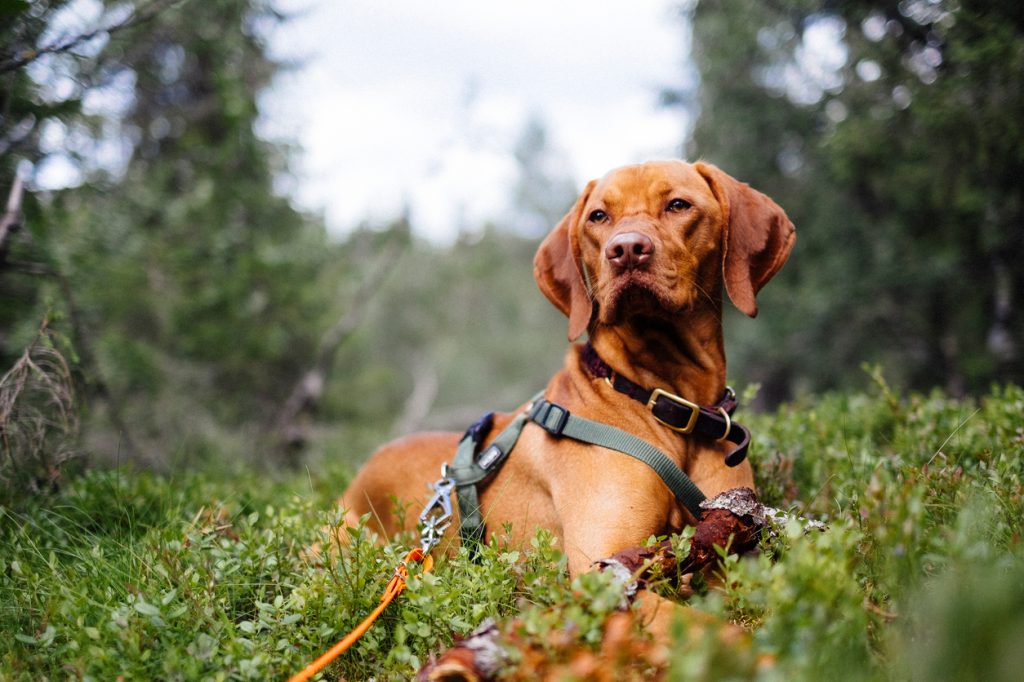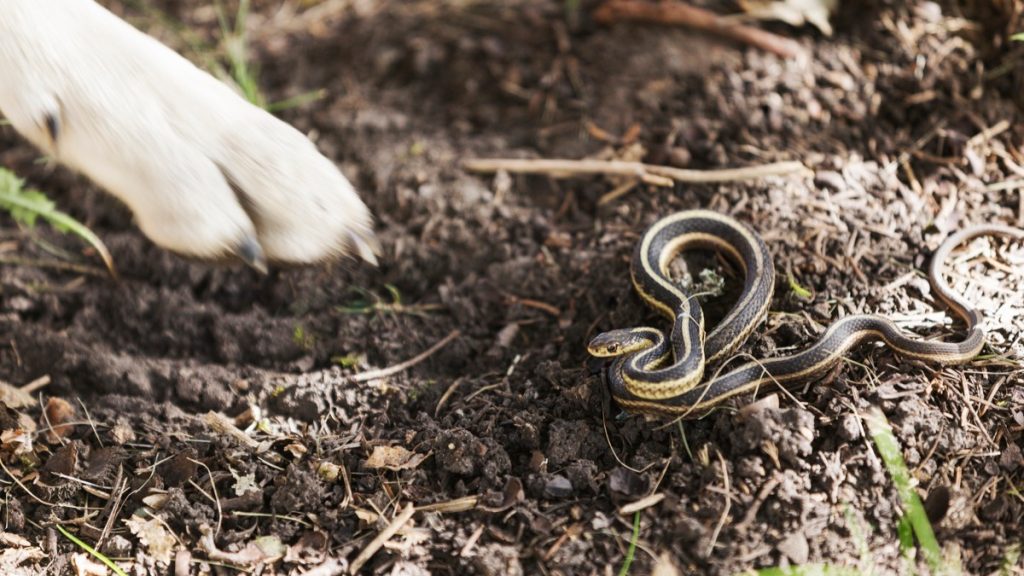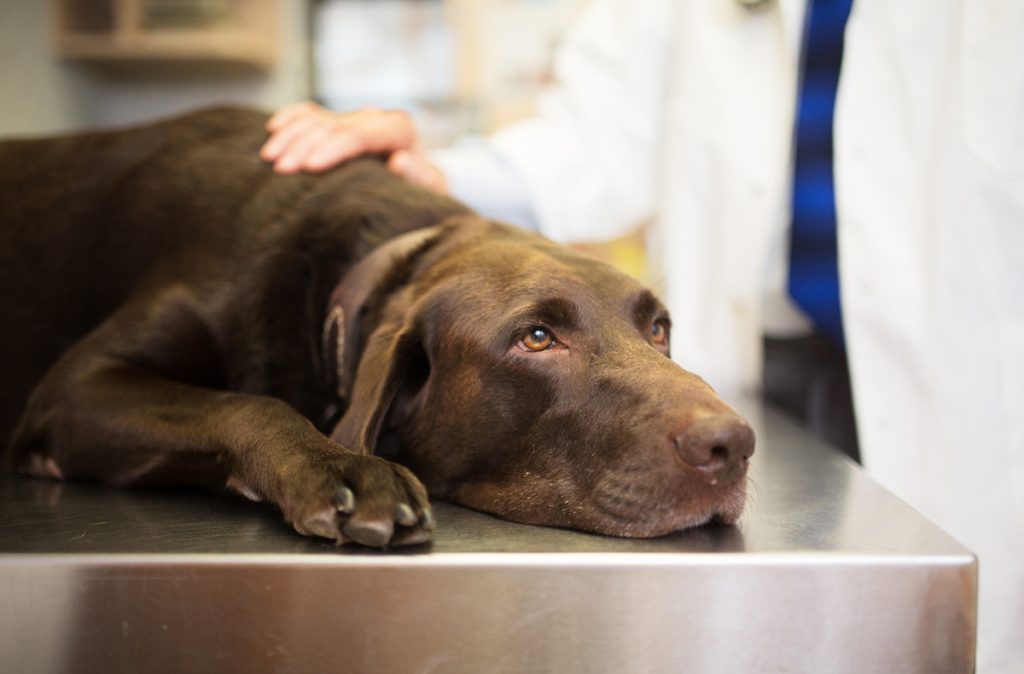Snake Attacks on Dogs Reported—How to Protect Your Pet

As a vital part of a healthy ecosystem, learning how to live with snakes that may make their way onto your property or accidentally wind up in your home is essential. But while you might be able to keep yourself safe by taking a few extra precautions when doing yard work or enjoying nature, keeping your dog out of danger can be much more challenging. Our naturally curious companions can sometimes wind up injured, with roughly 150,000 cats and dogs reported bitten in the U.S. annually, according to the Morris Animal Foundation. Fortunately, there are still some ways you can reduce the risk of snake attacks on dogs. Read on for some expert tips on how to protect your pets.
READ THIS NEXT: Two Copperhead Bites Reported as Snake Season Begins—Here’s Where They Were Hiding.
Dogs have been seriously injured in recent incidents involving venomous snakes.

Even though most pet owners are prepared for the worst when it comes to accidents, a few recently reported incidents have shown that snakes can pose a particular danger to dogs.
In a Facebook post, the Humane Society of Pikes Peak in Colorado said that it had admitted a dog named Baby Girl suffering from a severely swollen face and neck due to what appeared to be a snake bite. The shelter says that the injured canine would still need two to three weeks of treatment to fully recover, and they are currently searching for a home willing to foster her while she recuperates.
Unfortunately, not all dogs are quite as lucky. In March, Baytown Police Department in Texas said that Lenin, a bomb and gun detection dog from its K-9 unit, succumbed to a venomous snake bite he suffered during a training exercise, local ABC affiliate KTRK reported. The agency mourned the loss, with Chief John Stringer saying the dog had made “significant contributions to the safety of Baytown in his short time with our department, and he will be missed.”
Experts say you should keep an extra eye out for your dog whenever you’re out in nature.

As active animals, it’s impossible to completely eliminate the possibility that your dog could wind up disturbing a dangerous snake—especially if they’re accompanying you on a nature walk. But you can still do a few things to help reduce their chances of getting bit.
Experts say a big part of protecting your pup is to not allow them to wander too far away. “Stick to clearly marked trails and paths and make sure your dog is always on a leash,” says John West of Alamo Pest & Termite Control. “If your dog does have a tendency to want to explore, make sure to stay away from overgrown, grassy areas, as these are common spots for snakes to find shelter.”
Paying attention to your dog’s behavior can also be a key to preventing a bite. “Dogs will often signal that something isn’t right,” Roger Dickens, technical bird and wildlife control expert with Ehrlich Pest Control, tells Best Life. “They may have heard the snake moving, smelled it, or seen it moving.”
If your dog’s behavior changes, he says to pay attention to where their focus is. “Hold the leash tightly until you can verify why the change is happening. And if you do see a snake, avoid getting within striking distance and safely move around it,” Dickens suggests.
For more outdoor advice delivered straight to your inbox, sign up for our daily newsletter.
You can also take steps to make your yard less friendly to potential snakes.

Even if you’re the type of dog owner who likes to spend as much time with your pet as possible, you won’t always be able to have an eye on them. If you live in an area where venomous snakes are an issue, you might want to take further action to ensure your canine is safe when exploring its own home turf.
According to West, fencing in your yard can be one easy way to keep them out. “You should also eliminate any potential hiding place by keeping a well-maintained yard with regularly-mown grass,” he suggests. “This includes cleaning up piles of leaves or pine straw, pruning trees and shrubs, and moving your wood pile off the ground and far away from your home.”
And while it’s a bit more advanced, you can also train your dog to avoid snakes instead of being curious about them, says Georgina Ushi Phillips, DVM, a writer for The Reptile Room and a Florida-based veterinarian.
“With positive reinforcement training and realistic looking fake snake, you can reward your dog when they avoid the snake, which will prepare them in case they encounter one on their own in the yard or on a walk,” she tells Best Life.
Getting your pet to a vet after a snake bite can drastically improve the outcome.

While being prepared can prevent accidents, it won’t stop all of them. Fortunately, statistics show that about 80 percent of pets survive snake bites if treated promptly, according to the Morris Animal Foundation.
“If you suspect a snake has bitten your dog, seek veterinary attention immediately,” says Phillips. “Signs of snakebite in dogs may include swelling, pain, lethargy, vomiting, and possible collapse.”
And since brushes with non-venomous snakes can still leave painful injuries that require attention, Dickens says it can be best to treat these situations with urgency.
“If a snake bites your dog, try to get a picture or identification of it without putting yourself in danger,” he suggests. “And be sure to remove their collar to prevent them from being choked if swelling of the neck or throat occurs.”